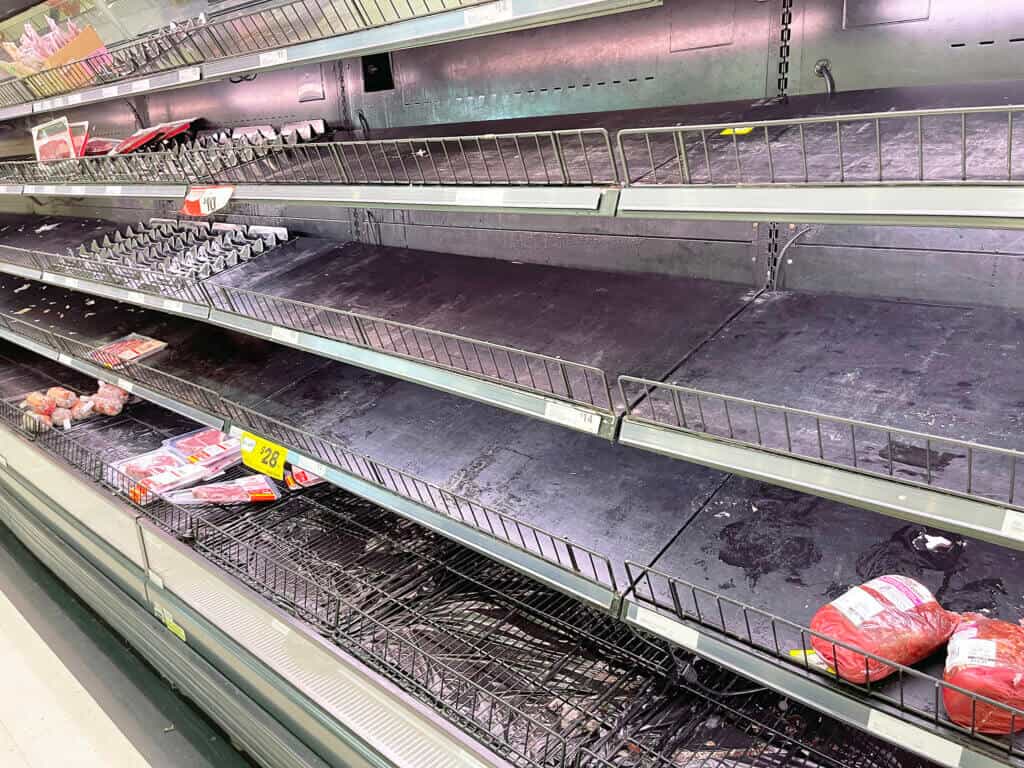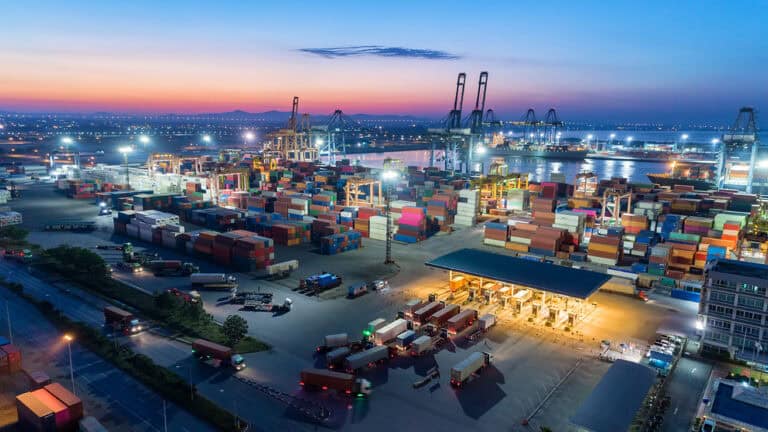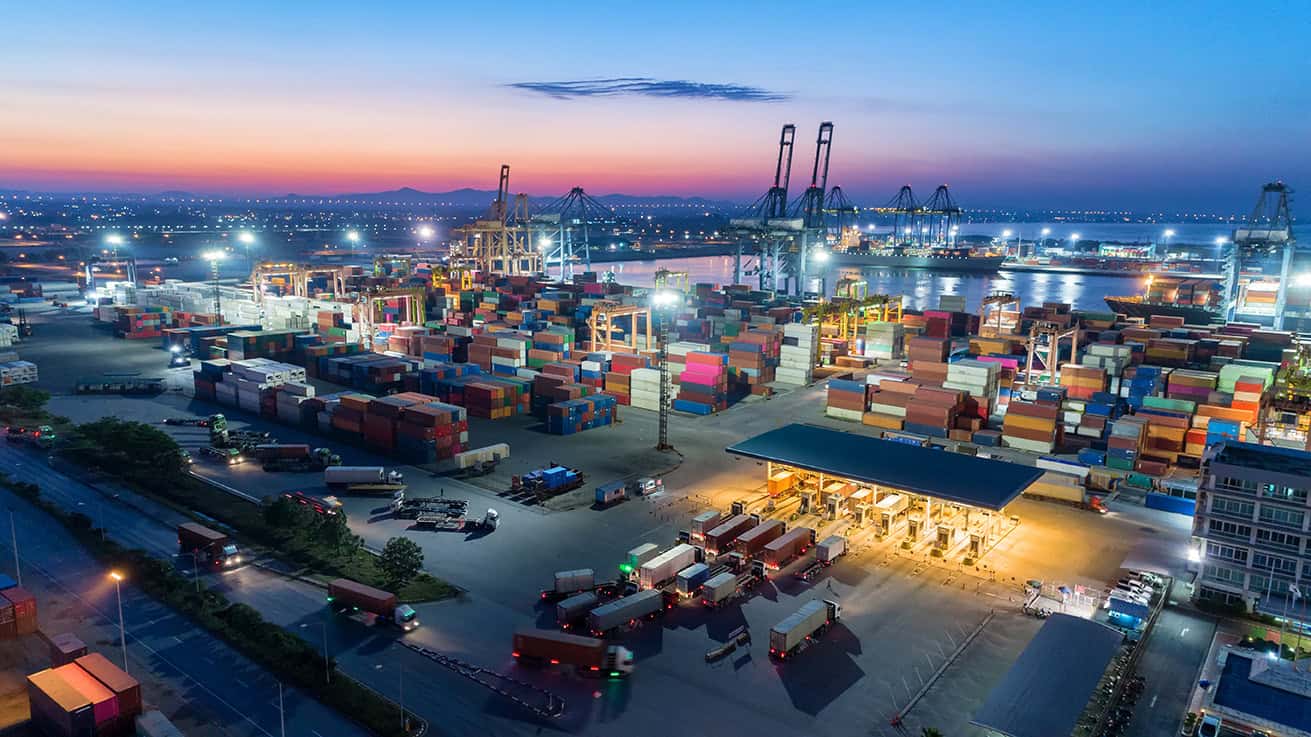
After the Thanksgiving holiday in the US, a co-worker in Florida commented that her grocery store was restricting cream cheese purchases, creating a buzz and taking national airtime during the Christmas season. Yet another mentioned the lack of King’s Hawaiian rolls at his store. Supply chain pressures have caused inflationary pricing for everything all around the globe in the last 12 months, and food and beverage prices have increased exponentially.
Like most things these days, we blame the pandemic. With the second anniversary of the Covid-19 pandemic, global supply chain disruptions like the congestion at ports and shortages of truck drivers and sufficient labor are blamed for higher prices and low inventory levels. But are there other factors leading to food supply chain shortages?
The short answer is yes. After digging deeper into the question, it becomes apparent that multiple repercussive issues from the pandemic have created a chaotic chain reaction – like one of the marvelous domino tricks, but not as cool.
So, where do we start to unravel this convoluted mess? Let’s start with the obvious.
Current Food Supply Chain Challenges
Labor shortages
At the core, the supply chain disruptions are exacerbated by a lack of labor. National and regional lockdowns, factory and port closures, and hospitalized or quarantined workers have cut into the potential workforce. Government stimulus payments have been blamed by many for the shortfall of low-cost workers who see no benefit of returning to their positions after lockdowns have been lifted. A shortage of truck drivers—a pre-pandemic problem, but one that has only worsened since—means goods can’t get from the ports to warehouses to find their way to retailers and consumers. The work-from-home model doesn’t work for port and dock workers. Seaports have been congested for months, and there’s no end in sight. As new Covid-19 variants arise in waves across the globe, the vacillating labor pool recedes dramatically and rises again, but staffing levels never fully return to normal.
Packaging woes
The absence of people power considerably impacts global supply chains and logistics. Trucks and railroads move ingredients, materials, and components to production facilities worldwide. These factories then produce finished goods and products that need to be packaged for distribution and, in some cases, long-term storage. With the absence of materials to make something as simple as cans for tuna fish, beer, or pet food—and even the foil for ketchup packets or dipping sauces—can’t be produced. According to the Washington Post, “While typical grocery categories are experiencing 5 to 10 percent of products out of stock right now, beverage shortages are higher, with around 13 percent missing from shelves. Shortages have been showing up in waters, iced teas, and soft drinks, as well as beer, hard seltzer, and canned cocktails.” The alternative packaging options are not an option either; a lack of resin production has led to shortages of plastic bottles. Glass bottles are also difficult to source.
Escalating costs
According to a CNN Business report, “grocery prices were 6.4% higher than they were a year ago, the fastest pace of food inflation in more than a decade.” Picking up where we left off with the lack of aluminum beverage containers, the cost to transport light aluminum cans is a lot cheaper than bottles—the substitute container for some beverages. Then there’s the high cost of refrigerated trucks required to move fresh produce, flowers, frozen goods, etc. Vaccine demand has not only robbed most of the reefer trucks for critical distribution, but it has driven the truck prices up higher.
Meat products
Many readers might remember the old fast-food commercial where Clara loudly asked, “Where’s the beef?” These days, you might find beef in a vault, given the sky-high price per pound. Technically, all meat prices have increased; however, beef price increases topped 20% last year. This is another “chain reaction” from the Covid lockdowns in 2020 when production plants shut down, leaving farmers with nowhere to send their beef. After taking a loss and culling livestock, farmers scaled back their production as a safeguard. Additionally, feed and packing prices escalated, and labor concerns in the packing plants slowed that end of the supply chain. Today, chicken tenders are hard to find, and product recalls are creating major challenges for retailers and consumers.
Work-at-home eating habits
It’s easy to understand why demand has blown away any supply forecasts since most readers are probably working from home. Along with labor and transportation shortages, consumers are spending more time at home, leading to higher demand for snacks, drinks, paper products, desk chairs, monitors, and, of course, pet food.
Protectionist trade policies
Like those I talked about in the soybean blog a few months ago, government agencies are considering the extended effects of national lockdowns and food shortages and taking action. While not new, post-Brexit restrictions were placed in effect on January 1st for goods imported from the EU into Britain. The deadline changes the procedures, making full customs declarations a requirement, and physical checks will become more rigorous. Meat, dairy, and produce importers must pre-complete declaration forms in the national IT system 24 hours before the goods arrive at the border. This requirement is likely to create major difficulties for exporters of fresh food. Another example is the China Customs agency’s new Decree 248 Registration and Administration of Overseas Producers of Imported Food, which took effect on January 1st, 2022. This new regulation requires all foreign food producers, warehouses, and cold storage facilities to register and comply with new labeling rules and food inspection guidelines to adhere to Chinese food regulations.
What’s ahead for global food supply chains?
Global food supply chains have been hammered by a cacophony of disruptive factors: high transportation expenses, labor shortages, trade policies, and packaging issues. As we’ve now turned the calendar forward, some improvements can be expected this year. Supply chain leaders are managing under the new normal and using data and learned performance indicators to predict and react to market shifts more effectively. This collective learning will provide a more stable yet agile environment to reduce the impact of recurring supply chain disruptions.
While nothing is promised, predictions point to an improvement in staffing levels. Unfortunately, driver and transport equipment shortages will still plague most countries, and Covid variants will continue to cause processing and production facilities to close for long periods.
While the food industry has been slower to adopt technology than other industries, there has been an acceleration in digital transformation to improve data-sharing and collaboration across the supply chain. End-to-end supply chain visibility across all tiers of supply, logistics, and retailer data provides insight to help optimize inventory levels and product assortment. Tools like artificial intelligence and predictive analytics will be enhanced with probabilistic methodology. With this level of sophistication, brands can quickly adjust supplier inputs, production volumes, and logistics plans to move products to exactly where they are needed.
Mastering the supply chain will become an even bigger competitive advantage for the food and beverage industry. To understand more about e2open’s supply chain management technology for your company, visit here.







